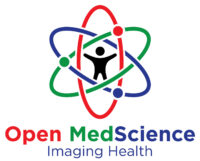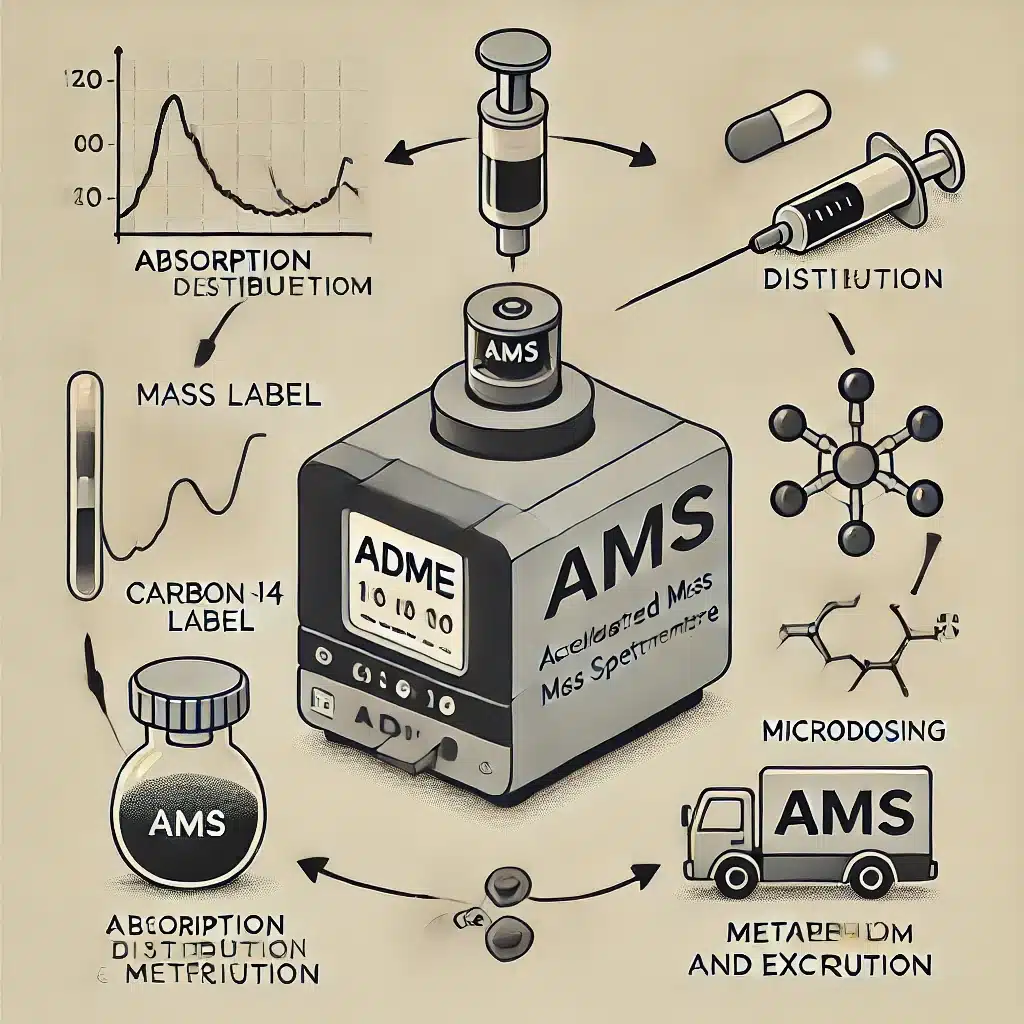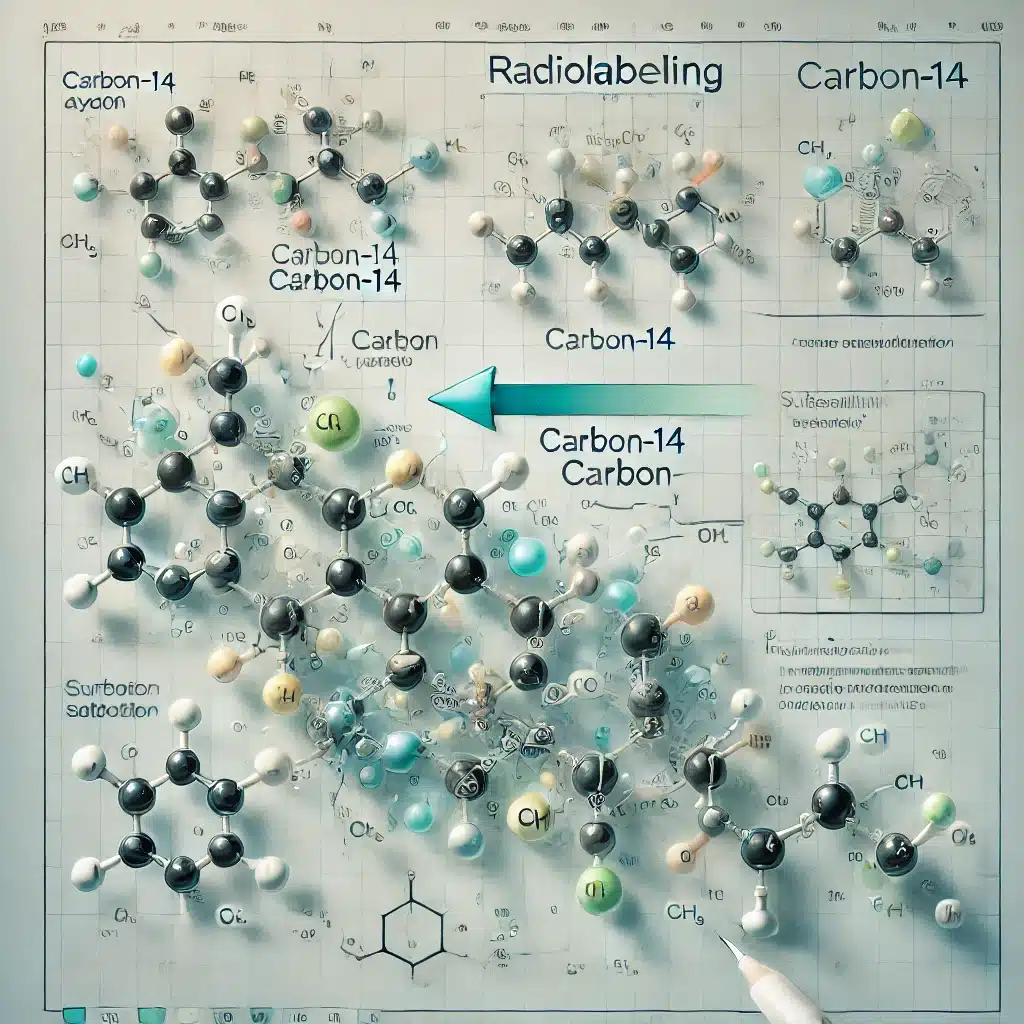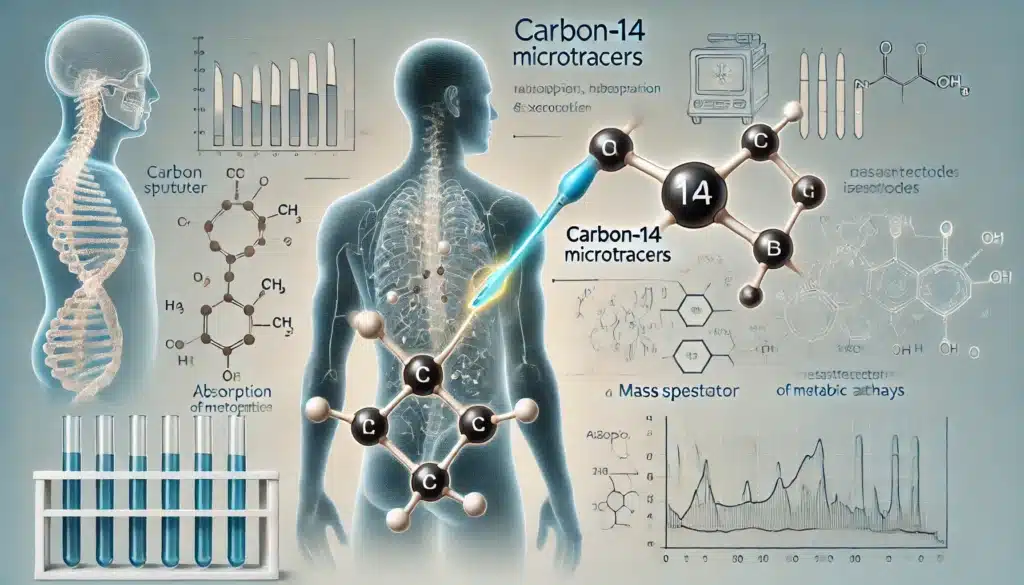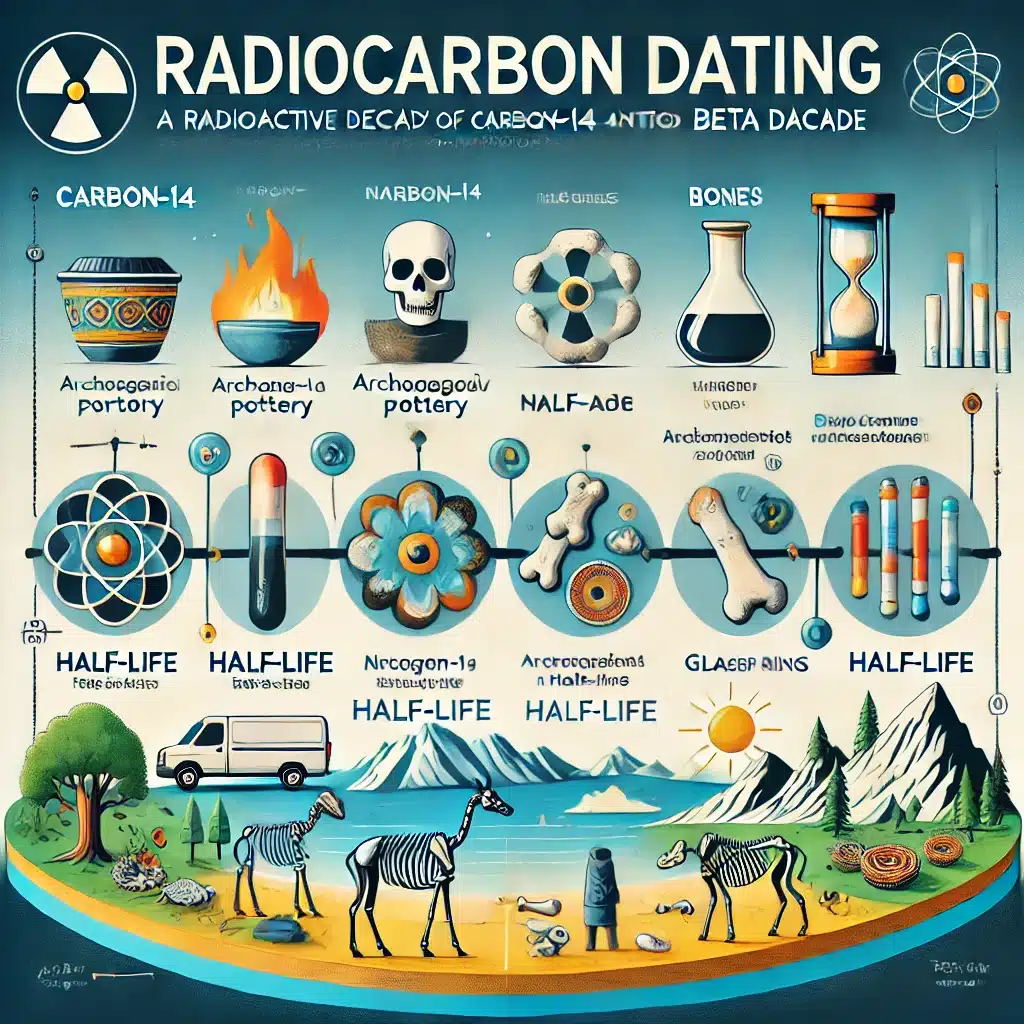Summary: Carbon-14 (14C), a radioactive isotope of carbon, plays a remarkable role in medical research, diagnosis, and treatment. Its unique radioactive properties, characterised by predictable decay, enable groundbreaking advancements across multiple medical disciplines, including radiocarbon dating for forensic investigations, biological tracer studies, and cancer therapy. Understanding how carbon-14 functions within these areas provides insight into its significant contribution to modern medicine and highlights the safety measures necessary due to its radioactive nature. This article examines the applications, benefits, limitations, and future prospects of medical carbon-14.
Keywords: carbon-14, radiocarbon, medical tracer, cancer treatment, forensic medicine, radiotherapy
Introduction: Understanding Carbon-14
Carbon-14 (14C), discovered in 1940 by Martin Kamen and Sam Ruben, is an isotope of carbon notable for its radioactive properties and consistent half-life of approximately 5,730 years. It exists naturally due to cosmic radiation interacting with Earth’s atmosphere, forming a small yet measurable amount of radioactive carbon dioxide. Despite its initial fame for dating ancient artefacts and fossils, the significance of carbon-14 has grown substantially in medical fields due to its unique radioactive decay characteristics.
Its application in medical sciences revolves around its ability to act as a radioactive tracer, enabling researchers and clinicians to investigate biological processes with high accuracy. The isotope emits low-energy beta particles, which facilitates precise monitoring and detection of molecular changes within biological systems, underpinning diagnostic and therapeutic approaches.
Carbon-14 as a Radiotracer in Medical Research
The primary use of carbon-14 in medicine is as a radiotracer—a radioactively labelled compound used to trace chemical and biological pathways in the body. This method, known as radiolabelling, provides insights into drug metabolism, absorption rates, and physiological interactions.
Medical researchers commonly attach carbon-14 to drugs or organic compounds to observe their distribution, breakdown, and excretion. For instance, pharmaceutical companies often employ carbon-14-labelled drugs in clinical trials to precisely determine how a drug is metabolised within the human body. This procedure, referred to as carbon-14 bioavailability studies, helps establish the safe and effective dosage of medications.
Similarly, carbon-14-labelled glucose has been used for a long time to trace glucose metabolism, providing detailed information about metabolic disorders such as diabetes. These tracer techniques have enabled clinicians to understand diseases at the molecular level, resulting in more targeted treatment strategies and improved patient outcomes.
Role of Carbon-14 in Diagnostic Medicine
Beyond research, carbon-14 finds applications in diagnostics. One notable diagnostic use involves the detection of bacterial infections, such as Helicobacter pylori (H. pylori), which is responsible for stomach ulcers and gastric cancers. The carbon-14 urea breath test is a highly reliable diagnostic tool in this context.
The test involves patients ingesting carbon-14-labelled urea. If H. pylori bacteria are present, they metabolise the urea into carbon-14-labelled carbon dioxide, which the patient exhales. A sensitive detection system analyses the radioactive carbon dioxide in the breath, confirming infection quickly and non-invasively. This procedure is particularly beneficial due to its simplicity, speed, and high diagnostic accuracy.
Furthermore, carbon-14-labelled compounds assist in diagnosing metabolic and gastrointestinal disorders. Its use as a diagnostic agent underscores the isotope’s importance in providing safer, minimally invasive alternatives to traditional invasive diagnostic methods.
Carbon-14 in Cancer Treatment
In therapeutic applications, carbon-14 plays a significant role in cancer treatment strategies. While direct use of carbon-14 in radiotherapy is uncommon due to its low-energy beta emissions, its role as a radiotracer has been influential in oncology.
Carbon-14-labelled anticancer drugs provide clinicians with valuable insights into tumour-targeted drug delivery. By tracking the distribution of these drugs within cancer cells, medical teams can assess the efficacy of chemotherapy agents. This tracer technique is instrumental in optimising chemotherapy dosage, thereby enhancing therapeutic efficacy while minimising toxic side effects.
Moreover, the role of carbon-14 extends to radiopharmaceutical research, where researchers are investigating how to integrate it with other therapeutic agents. The combination of carbon-14 radiotracers with targeted therapy methods promises to refine cancer treatment further, providing personalised, precision-based care for cancer patients.
Radiocarbon Dating in Forensic Medicine
While radiocarbon dating is most widely known in archaeology, the same principles are also beneficially applied to forensic medicine. Carbon-14 analysis helps forensic scientists determine the age of human remains, which is crucial in solving criminal investigations and identifying victims in cold cases.
The predictability of carbon-14 decay enables forensic pathologists to establish an approximate date of death or confirm the authenticity of skeletal remains. This capability can significantly impact legal proceedings by offering evidence-backed clarity, especially in complex investigations or disaster victim identification processes.
Additionally, analysis of carbon-14 in human tissues has been used to investigate the long-term effects of environmental exposure to radioactive substances, providing valuable data for public health assessments and epidemiological studies.
Safety and Ethical Considerations
The radioactive nature of carbon-14 necessitates careful handling and stringent regulatory oversight. Although its radiation emissions are relatively weak, occupational exposure must remain within prescribed limits, as governed by international radiation safety standards.
Medical professionals handling carbon-14-labelled compounds require specialised training in radiological protection. Laboratories must adhere strictly to established radiation safety protocols, employing protective equipment, specialised storage, and regular monitoring to minimise radiation exposure.
Moreover, ethical considerations accompany the medical use of radioactive isotopes, such as carbon-14, ensuring informed consent from patients undergoing diagnostic or therapeutic procedures involving radiation. Ethical oversight and regulatory compliance are essential for maintaining patient trust and ensuring health safety.
Advantages and Limitations of Using Carbon-14
The ability of carbon-14 to trace biological processes at the molecular level offers distinct advantages over traditional diagnostic and therapeutic methods. Its non-invasive nature in diagnostic tests such as the urea breath test significantly enhances patient comfort and acceptance. Furthermore, its precision in metabolic studies allows the development of tailored therapies and drugs, contributing to personalised medicine.
However, limitations do exist. Carbon-14 emits low-energy beta radiation, making it safer but less suitable for direct radiotherapy than more potent isotopes, such as cobalt-60 or iodine-131. Additionally, radioactive decay inevitably limits shelf-life and necessitates meticulous storage and handling, which can increase costs and complicate logistics in clinical settings.
Future Prospects of Carbon-14 in Medicine
The evolving field of nuclear medicine continually explores new avenues for the application of carbon-14. Advances in radiopharmaceuticals suggest carbon-14 could be pivotal in future innovations, particularly in personalised medicine and targeted therapy. Integrating carbon-14 radiotracers with emerging technologies, such as molecular imaging, holds promise for the precise detection and treatment of diseases at their earliest stages.
Future research may expand the diagnostic and therapeutic uses of carbon-14, particularly in oncology, infectious disease detection, and pharmacological innovation. Advances in detection sensitivity and imaging technology may further enhance the isotope’s clinical relevance, offering safer and more effective medical interventions.
Conclusion
Carbon-14 is utilised in various medical applications, including diagnostics, therapeutics, and research. As a radiotracer, Carbon-14 has enabled significant advancements in drug development, metabolic research, cancer treatment strategies, and diagnostic medicine. Its role extends even further into forensic medicine, highlighting the interdisciplinary nature of its applications.
Ongoing research and technological advancements promise to harness the potential of carbon-14 further, enhancing precision medicine and facilitating better patient outcomes. Yet, recognising and managing associated risks and limitations remain essential for its safe and responsible integration into future medical practice. Carbon-14, while initially famed in archaeology, has firmly established itself as an invaluable asset within modern medicine, demonstrating the remarkable synergy between science and healthcare.
Disclaimer
The content provided in this article is intended for informational and educational purposes only. It does not constitute medical advice, diagnosis, or treatment recommendations. While efforts have been made to ensure the accuracy of the scientific and medical information presented, Open Medscience makes no guarantees regarding its completeness or current applicability in clinical practice.
Carbon-14 is a radioactive substance, and its use in medical, research, or diagnostic settings should only be undertaken by qualified professionals following established safety protocols and regulatory guidelines. Readers should consult licensed healthcare or scientific professionals before acting on any information contained in this article.
Open Medscience accepts no responsibility for any loss, harm, or consequence resulting from reliance on the content of this publication. The views expressed are those of the authors and do not necessarily reflect the official policy or position of any affiliated institutions or regulatory bodies.
You are here: home » diagnostic medical imaging blog »